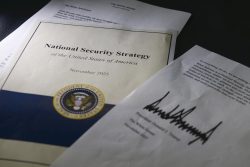JAL’s Safety Problems: Spate of Mistakes Points to Company’s Lax Organizational Discipline
15:04 JST, May 29, 2024
Small signs are said to precede major accidents. Japan Airlines Co. must eliminate looseness in its organization and thoroughly reinforce basic actions to ensure safety.
The Land, Infrastructure, Transport and Tourism Ministry has conducted an extraordinary on-site inspection of JAL based on the Civil Aeronautics Law after a spate of safety incidents. It is an unusual situation that the ministry has conducted two inspections in three months as it also carried out an inspection in February this year.
In line with the inspection this time, the ministry also issued a stern reprimand, which is tantamount to an administrative guidance.
In November last year and February this year, there were incidents involving JAL planes at two U.S. airports — an erroneous entry onto a runway and a crossing of a stop line in front of a runway. As a result, the first inspection was conducted by the ministry and the airline submitted measures to prevent a recurrence.
Nevertheless, another issue occurred in May when an aircraft crossed a stop line at Fukuoka Airport. There was also an incident in which the captain of a flight departing from the United States was heavily intoxicated before boarding, and the flight was canceled.
Although no one was injured in either case, the incidents were related to basic actions, such as the pilot’s failure to sufficiently check the air traffic controller’s instructions. It must be said that JAL lacked a sense of seriousness in taking charge of the passengers’ lives, including in the case of the captain’s heavy drinking.
What is particularly grave is the fact that in the incident at Fukuoka Airport in May, the measures taken in response to the aircraft collision at Haneda Airport in January were not applied.
The accident at Haneda Airport, in which a Japan Coast Guard aircraft and a JAL plane collided and burst into flames, was reportedly caused by the JCG aircraft misinterpreting the instructions of the air traffic controller and making an erroneous entry onto the runway.
As an emergency measure, the government requires the pilots to repeat the instructions and the air traffic controllers to confirm the repetition. However, in the incident at Fukuoka Airport in May, both sides reportedly failed to do so.
It is as if JAL had forgotten the shocking accident in which two aircraft collided and burst into flames. It seems that organizational laxness might be behind the spate of mistakes. JAL needs to examine the causes and consider what needs to be done to prevent a recurrence.
Measures must also be taken regarding the actual operations for air traffic controllers to avoid misunderstandings when communicating with pilots.
The introduction of equipment to compensate for human error should also be promoted, such as the installation of warning devices to alert pilots in the event of an erroneous approach onto a runway.
Since last year, the number of foreign visitors to Japan, which had plunged due to the coronavirus pandemic, has recovered, and demand for air travel is rapidly increasing.
It is time for JAL to go back to the basics regarding safety education, which it has thoroughly provided to its employees since the jumbo jet crash in 1985. It is hoped that JAL President Mitsuko Tottori, who assumed the post in April and has a background as a flight attendant, will demonstrate her leadership by placing the aim of thoroughly ensuring safety as a top business priority.
(From The Yomiuri Shimbun, May 29, 2024)
"Editorial & Columns" POPULAR ARTICLE
-

Artificial Intelligence Expands Possibilities for Foreign Language Learners
-

Build Intellectual, Physical Strength, As Well As Communicative Power / Japan Should Move from Beneficiary to Shaper of World Order
-

Global Economy in Turmoil: Prevent Free Trade System from Going Adrift / Risks to Financial Markets Must Be Heeded
-

Japan-China Strain Set to Persist as Beijing Officials Self-Interestedly Bash Tokyo; Takaichi Unlikely to Back Down
-

Elderly People Living Alone: What Should be Done to Ensure Living with Peace of Mind until the End?
JN ACCESS RANKING
-

Japan Govt Adopts Measures to Curb Mega Solar Power Plant Projects Amid Environmental Concerns
-

Core Inflation in Tokyo Slows in December but Stays above BOJ Target
-

Major Japan Firms’ Average Winter Bonus Tops ¥1 Mil.
-

Bank of Japan Considered U.S. Tariffs, Coming Shunto Wage Hike Talks in Its Decision to Raise Interest Rates
-

Tokyo Zoo Wolf Believed to Have Used Vegetation Growing on Wall to Climb, Escape; Animal Living Happily after Recapture



























